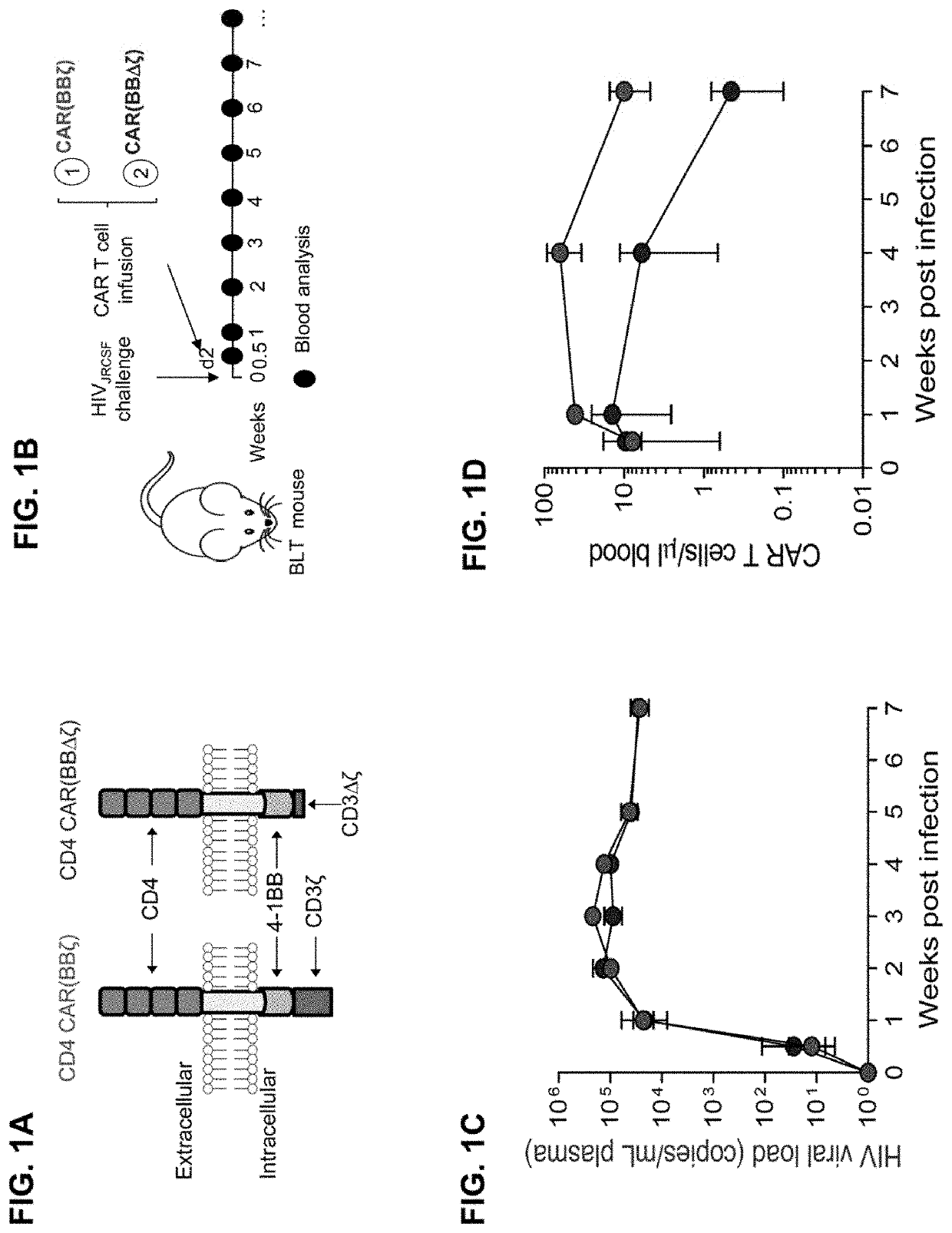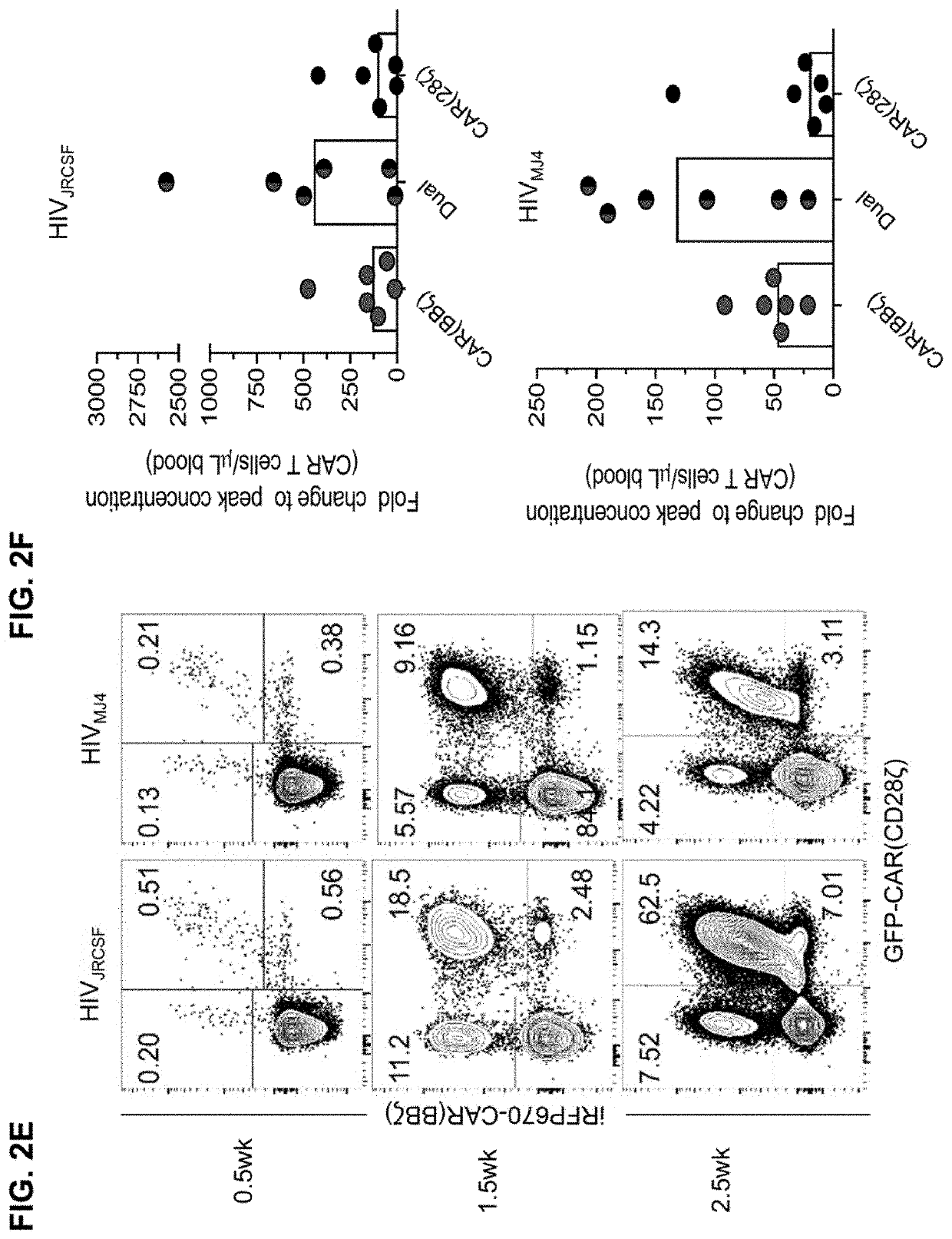Dual car expressing t cells individually linked to cd28 and 4-1bb
- Summary
- Abstract
- Description
- Claims
- Application Information
AI Technical Summary
Benefits of technology
Problems solved by technology
Method used
Image
Examples
experimental examples
[0533]The invention is further described in detail by reference to the following experimental examples. These examples are provided for purposes of illustration only, and are not intended to be limiting unless otherwise specified. Thus, the invention should in no way be construed as being limited to the following examples, but rather, should be construed to encompass any and all variations which become evident as a result of the teaching provided herein.
[0534]Without further description, it is believed that one of ordinary skill in the art can, using the preceding description and the following illustrative examples, make and utilize the compounds of the present invention and practice the claimed methods. The following working examples therefore, specifically point out the preferred embodiments of the present invention, and are not to be construed as limiting in any way the remainder of the disclosure.
[0535]The materials and methods used in the Experimental Examples are now described...
example 1
[0575]A CD4 CAR T cell infusion product was generated comprising CD4 CAR T cells that express either an intracellular 4-1BB costimulatory domain and an active signaling domain (FIG. 1A, left) or an intracellular 4-1BB costimulatory domain and an inactive signaling CD3ζ domain (FIG. 1A, right). The inactive signaling CAR T cells (FIG. 1A, left) do not induce T cell activation following recognition of a HIV-infected cell.
[0576]CD4 CAR T cells expressing active and inactive signaling domains were infused into humanized BLT mice 48 hours after HIV challenge (FIG. 1). Mice were bled at the indicated time points to measure 1) the level of virus and 2) the number of CAR T cells in peripheral blood (FIG. 1). Quantification of HIV in peripheral blood demonstrated that active CAR T cells (FIG. 1C) were incapable of preventing early virus replication relative to inactive CAR T cells (FIG. 1C). Active CAR T cells (FIG. 1D, red) were expanded in peripheral blood to a greater extent relative to i...
example 2
-Derived CAR T Cells are Multifunctional and Suppress HIV Replication In Vitro
[0584]To determine whether T cells isolated from BLT mice generate potent CAR T cell products, HIV-specific (CD4-based) CAR T cells expressing the CD3-ζ endodomain (CAR.ζ) from BLT mouse tissues and adult human PBMCs were manufactured using a process similar to one being used in clinical trials (Wang & Riviere (2016), Mol Ther Oncolytics 3, 16015; Fesnak et al. (2016) Nat Rev Cancer 16, 566-581) (FIG. 4A). BLT mouse- and human-derived CAR.ζ T cells exhibited comparable in vitro expansion kinetics and CAR surface expression levels (FIG. 4B and FIG. 5A). Antigen-specific stimulation with K562 cells expressing HIVyu2GP160 (K.Env) induced similar cytokine expression and polyfunctionality profiles between the CAR T cell sources (FIGS. 4C-4E and FIGS. 5B-5C). Furthermore, CAR.ζ T cells from both donors suppressed viral outgrowth down to a 1:50 effector-to-target ratio in vitro (FIGS. 5D-5F), and induced similar ...
PUM
| Property | Measurement | Unit |
|---|---|---|
| Current | aaaaa | aaaaa |
Abstract
Description
Claims
Application Information
 Login to View More
Login to View More - R&D
- Intellectual Property
- Life Sciences
- Materials
- Tech Scout
- Unparalleled Data Quality
- Higher Quality Content
- 60% Fewer Hallucinations
Browse by: Latest US Patents, China's latest patents, Technical Efficacy Thesaurus, Application Domain, Technology Topic, Popular Technical Reports.
© 2025 PatSnap. All rights reserved.Legal|Privacy policy|Modern Slavery Act Transparency Statement|Sitemap|About US| Contact US: help@patsnap.com



